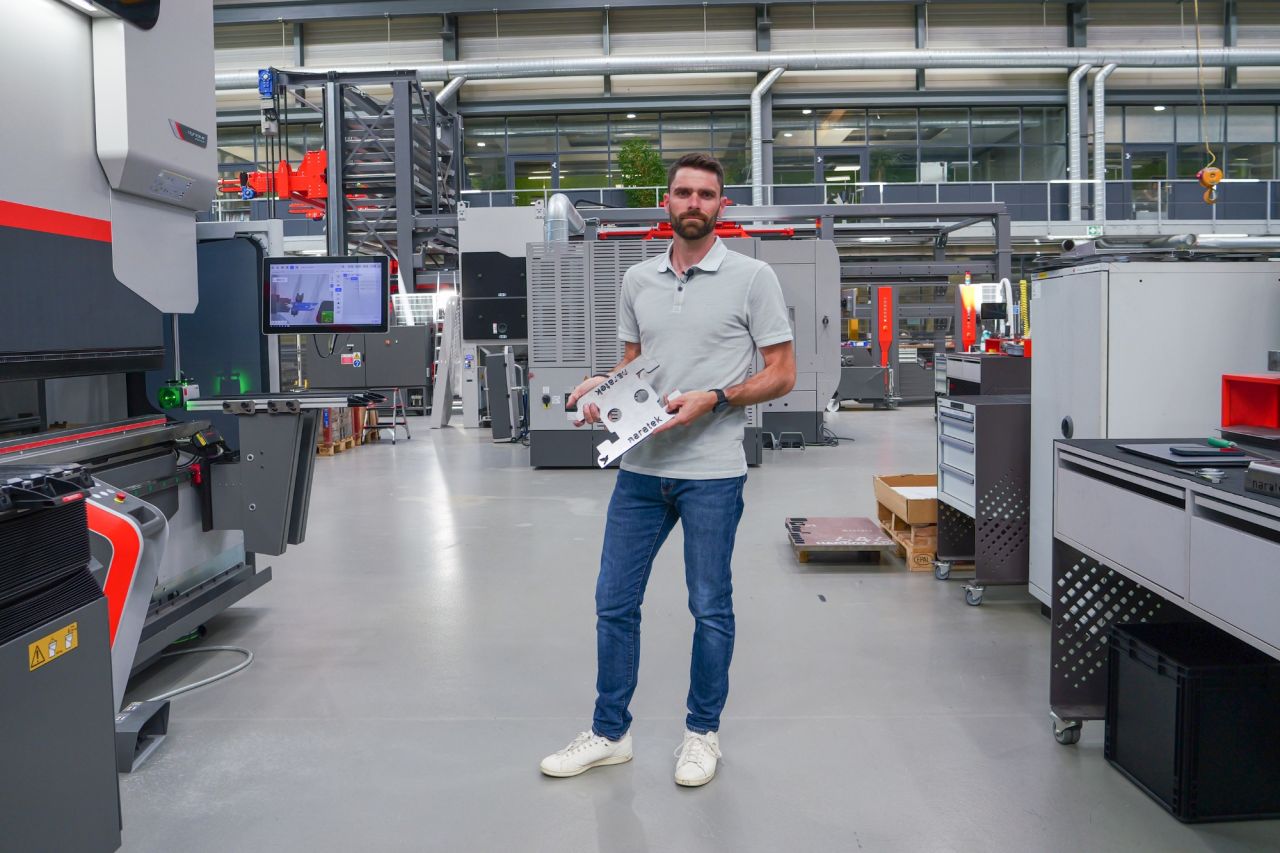
News The future is built on green steel
Our world is built on steel. From buildings and power lines to the automotive industry and shipbuilding to medical, office, and computer technology, there is no area of our lives that does not contain steel in some form.
“Steel has thousands of applications,” says Wilfried Liegard, a member of the research team at Bystronic.
Steel offers many different properties: It can be as rigid as it is flexible, absorbent or resilient, easy to shape or dimensionally stable. Added to this is the fact that iron ore is almost inexhaustibly available on our planet. “Our world is built on steel,” he says.
High emissions
And the hunger for steel is growing: In the last 50 years, steel production has increased about sixfold. In 2022, over 1.8 billion (!) tons of steel were produced, according to worldsteel.org – two thirds of it in China. Steel production therefore has a decisive influence on achieving climate targets. Worldwide, steel production is responsible for around eight percent of CO2 emissions; in Europe the share is four percent. In the classic manufacturing process, 1.8 metric tons of CO2 are produced concurrently with each metric ton of steel. Or as Christian Leinenbach, metals expert at the Empa research institute and lecturer at EPFL, pointedly puts it: “It's actually CO2 production. Iron is the useful byproduct.”
“Our world is built on steel.”
Wilfried Liegard, Manager Global Vision Technology
Manufactured with renewable energy
As in other areas of life, pressure is growing in the steel industry to become climate-neutral. But how? The magic word is fossil-free, or “green” steel – steel whose production releases as little CO2 as possible into the air. Christian Leinenbach cites several ways to achieve this. On the one hand, oxygen can be removed from the ore using hydrogen instead of carbon. “The reaction with hydrogen produces not pig iron but porous granulate,” he says. This can then be processed into steel in the electric arc furnace using electricity – the energy requirement to do so is lower than that of the blast furnace. The important thing is that the electricity for the arc furnace and the production of the hydrogen must come from renewable energy sources.
Substantial investment required
Nevertheless, green steel is not yet being produced in large quantities. The Swedish company SSAB is currently leading the way – but with a total production capacity of just under nine million metric tons, it is a small fish in the pond. In 2020, the steel giant China Baowu Group produced over 115 million metric tons, while Arcelor Mittal managed 78.5 million metric tons.
“The biggest challenge is scalability of production,” Liegard says. The change would require high investments, at around one billion U.S. dollars per steel company, by his calculation.
Read the full report on our partner platform, www.naratek.com, the digital magazine at the intersection of technology, society, and culture.